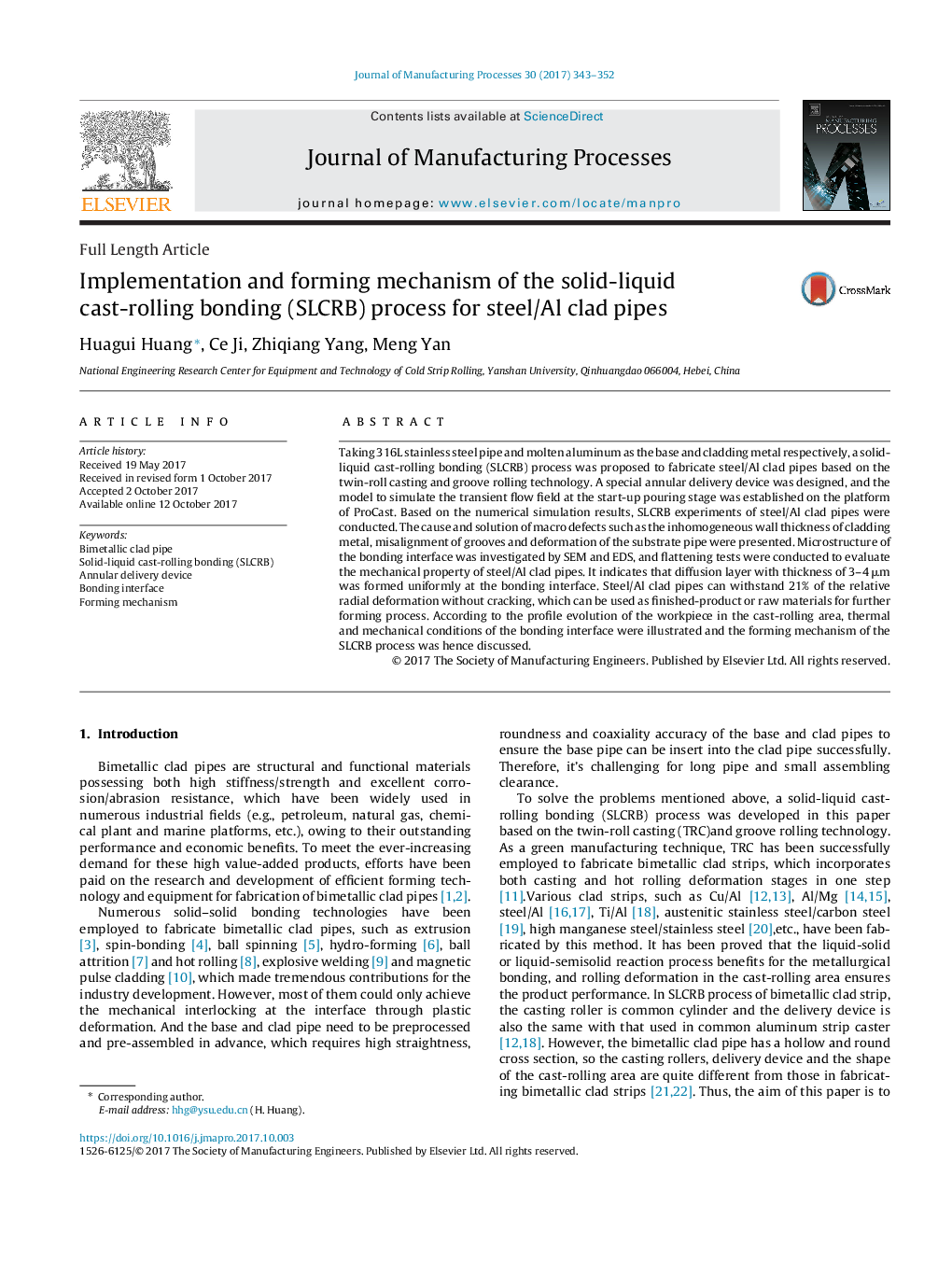| Article ID | Journal | Published Year | Pages | File Type |
|---|---|---|---|---|
| 5469229 | Journal of Manufacturing Processes | 2017 | 10 Pages |
Taking 316L stainless steel pipe and molten aluminum as the base and cladding metal respectively, a solid-liquid cast-rolling bonding (SLCRB) process was proposed to fabricate steel/Al clad pipes based on the twin-roll casting and groove rolling technology. A special annular delivery device was designed, and the model to simulate the transient flow field at the start-up pouring stage was established on the platform of ProCast. Based on the numerical simulation results, SLCRB experiments of steel/Al clad pipes were conducted. The cause and solution of macro defects such as the inhomogeneous wall thickness of cladding metal, misalignment of grooves and deformation of the substrate pipe were presented. Microstructure of the bonding interface was investigated by SEM and EDS, and flattening tests were conducted to evaluate the mechanical property of steel/Al clad pipes. It indicates that diffusion layer with thickness of 3-4 μm was formed uniformly at the bonding interface. Steel/Al clad pipes can withstand 21% of the relative radial deformation without cracking, which can be used as finished-product or raw materials for further forming process. According to the profile evolution of the workpiece in the cast-rolling area, thermal and mechanical conditions of the bonding interface were illustrated and the forming mechanism of the SLCRB process was hence discussed.
